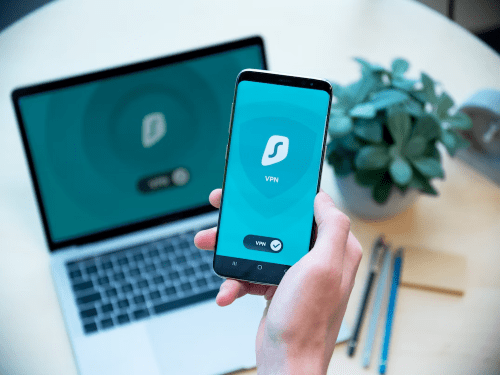Cybercrime is one of the greatest threats to modern businesses, so naturally, cybersecurity is becoming a top priority among business leaders worldwide.
It’s easy to see why. Cybercrime can result in significant losses for companies, particularly financially. In fact, the global cost of cybercrime is expected to rise to $23.84 trillion by 2027, up from $8.44 trillion in 2022.
Businesses collect and store mountains of data daily, and are obligated to keep that data secure. But it’s not only customer data that needs protecting. Employee data is incredibly personal.
Businesses often store private information like contact details, social security numbers, bank accounts, medical histories, background checks, and more.
Employee data breaches can leave employees vulnerable to social security fraud, bank fraud, phishing attacks, and even reputation issues.
So how can businesses protect their workforce’s personal data? Here are 9 foolproof ways to protect your employee privacy.
1. Develop clear privacy policies
Having a clear, well-defined privacy policy has several benefits, including:
- Transparency: When joining a company, employees can assess the privacy policy and decide if they’re happy to accept it. This way, employees know where they stand, and businesses have recourse to enforce any privacy rules going forward.
- Streamlined process: The business can build its entire privacy culture around these clearly defined policies. Everyone within the company knows the rules, and systems are designed to follow them.
A privacy policy is a good starting point to install privacy and cybersecurity into the daily workings of your business.
2. Implement access controls and authorization

Think about who should have access to what. Depending on an employee’s job description and level of trust within the company, you can determine the level of access they need to secure information.
For example, an accountant needs high-level access to employee financial information, but a customer service representative does not.
Most devices and enterprise software contain access controls, which means it’s simple to set up what individual employees can and cannot access. You can use access controls to keep an access log, which is a good way to monitor both employee and third-party access to your systems.
It’s also crucial to revoke access where it’s not needed. If an employee’s access levels change – if they leave or move to a new department within the company, for example – their access should be reassessed and revoked if necessary.
3. Ensuring data security.
After defining a privacy policy, it’s time to put data security into action. Consider the following:
Standards
SOC2 compliance (System and Organization Controls) is a good data security standard to aim for. SOC2 is a voluntary compliance standard for data security, developed by the American Institute of Certified Public Accountants to ensure a standardized principle for business data security. Look out for SOC2 certified software to ensure your safety and compliance is as strong as possible.
Secure storage
Businesses store a lot of data, often in the hundreds of terabytes. Data breaches can happen when data isn’t stored safely, so don’t leave yourself vulnerable.
Many companies store their data off-site using third-party cloud-based solutions. Others store their data in-house using on-site servers. And because data storage can be costly, it can be tempting to cut corners for cheaper solutions.
Always research third-party companies offering cloud storage. Are they reputable? Do they come with good testimonials? Is their security and compliance on point?
If you store data in-house, are your servers well-maintained by professionals? Are you up to date with the latest storage regulations?
Antivirus protection
A good antivirus is a staple on every device. Research which is the best for your needs.
4. Employee training and awareness
Many data breaches happen due to human behavior. Today’s cybercriminals are adept at using human psychology to trick people into handing over private information. This practice is commonly referred to as “social engineering” and can be devastating for individuals and companies alike.
Phishing scams, for example, often involve a very official-looking text or email that is sent to a recipient who is requested to click a link. Once they do this, the cybercriminal can steal that person’s login credentials and gain access to sensitive information.
With this in mind, it’s vital to implement cybersecurity training for employees, focusing on elements of data security and compliance so they can better protect themselves.
Passwords
Employees should be trained to follow good password practices, which includes the following:
- Using unique passwords for different accounts.
- Including a mix of uppercase and lowercase letters, numbers, and symbols.
- Using reputable password managers.
- Regularly changing passwords.
- Implementing two-factor authentication, where possible.

Employee devices
Employees often work across a variety of devices, particularly if you operate a hybrid work environment. For example, they might have a work PC, work tablet, personal phone, and home laptop. In addition, modern remote working solutions offer simple ways to log into work systems from any device on-the-go.
It can be difficult to ensure all these devices are secure. Companies can mitigate risks by locking work software to work-only devices or requiring employees to install security software on their own devices.
Another helpful option is to use a device management solution, like AirDroid Business MDM. This allows companies to keep devices up to date and control security policies from one unified place, particularly useful when it comes to employees working from home on multiple devices.

Remote working
Like an abundance of devices, remote working introduces various security vulnerabilities.
Working from home often means an employee using a home computer to access business systems. If the employee’s device, home WiFi, or working environment is not secure, the data they access can be compromised.
Security measures like antiviruses, remote access security, and robust password practices can help. Businesses should also consider providing employees with dedicated work devices to use at home and restricting access to business systems from those specific devices.
Regular training
Simply making employees aware of scams, security issues, and best online practices can drastically cut down on cybersecurity risks.
Regular training and company-wide reminders about the latest safety issues should be standard in your business.
5. Monitor and manage third-party access
Many businesses partner with third parties. It’s common for businesses to outsource everything from accounting and communications to hospitality payroll software, or, as we discussed above, storage solutions.
While these partnerships can be hugely beneficial to your company, they also put data at increasing risk. So any third parties should be thoroughly vetted before they’re allowed access to your systems. Research companies before doing business with them by reading online reviews, asking for advice from other professionals in your industry, and requesting to see their company’s privacy policy.
Once they have access, ensure it is tightly controlled and monitored using access controls.
6. Secure communication channels

Many businesses use unified communications software to facilitate workflow, whether in-house solutions or SaaS models. These channels include email, instant messaging, phone calls, and video conferencing.
The information sent over these communication channels is likely to be sensitive, from personal chat of office gossip to in-depth financial details.
A good cybercriminal can gain knowledge from the most unexpected communication, such as password details from an instant message about a child’s birthday party or the ability to forge paperwork by extracting an employee’s e signature from an email.
If you use an in-house solution, make sure all of your communications data is encrypted. If you use a SaaS provider, ensure they’re reputable and up to date with all of their security compliance.
Regularly assess and update the security measures of your communication channels, including encryption protocols and access controls. Implement monitoring systems to track the flow of sensitive information and monitor employees to detect any unauthorized activities or breaches.
This proactive monitoring of employees helps maintain the integrity of your data and ensures that any potential security incidents are promptly detected and addressed. By regularly monitoring employees and the flow of sensitive information, you can take necessary actions to safeguard your organization’s data and protect against potential threats.
7. Maintain physical security
Cybersecurity isn’t the only threat to employee privacy. Many companies keep hard copies of data on their employees, both current and historical, which must be kept in a safe location where access is limited.
Is your premises secure? Is the data locked away? Who has access to it?
Just like you’d revoke system access to ex-employees, it’s a good idea to revoke physical access, too. Ask them to return keys and security cards, and keep security informed of any troublesome former employees who might have reason to harm your company.
Additionally, consider implementing identity proofing measures to ensure that only authorized individuals can access sensitive physical data and facilities.
8. Regular privacy impact assessments
Technology changes quickly. Cybercriminals operate at the cutting edge of technology and your business needs to keep up. New threats will pop up constantly, emerging and evolving fast.
Make yourself accountable. Perform regular audits on your data security using operational risk management tools to ensure your business is doing everything it can. This way, your business stays up-to-date with the latest threats and can locate and fix issues before they become a real problem.
If a breach should occur, have a plan in place for investigating it.
9. Legal compliance and best practices
If you were looking into how to classify non exempt vs exempt employees, you would understandably review the criteria and ensure you adhere to local labor laws. The same should apply when it comes to privacy.
Remember that every country has its own data compliance laws, and some even have different laws for different provinces. For example, the US has laws that vary by state.
Knowing your local regulations is essential when crafting and enacting your privacy policies. Remember these regulations will often change as new technology emerges and vulnerabilities are discovered, so it’s vital that you keep up with the latest best practices.
Similarly, employee privacy laws can vary and change. Even if your local employee privacy laws are minimal, it might be a good idea to enforce a strong policy for your employees’ peace of mind. Happy employees are more productive, and feeling safe in the workplace is a significant part of that.
Protect your employees’ privacy today

Ensuring employee privacy is a legal obligation for many businesses, but it’s also a moral responsibility. Your employees deserve their privacy, and they need to feel confident that their personal information is safe.
Data breaches can have massive repercussions for businesses. But for employees, the consequences of unsecured data are more personal. Nobody wants their private medical or financial information in the hands of someone set out to do them harm.
Considering these foolproof ways to protect your employee privacy can help you stay educated about cybersecurity threats, shore up your business against attacks, and give your employees the peace of mind they deserve.
Leave a Reply